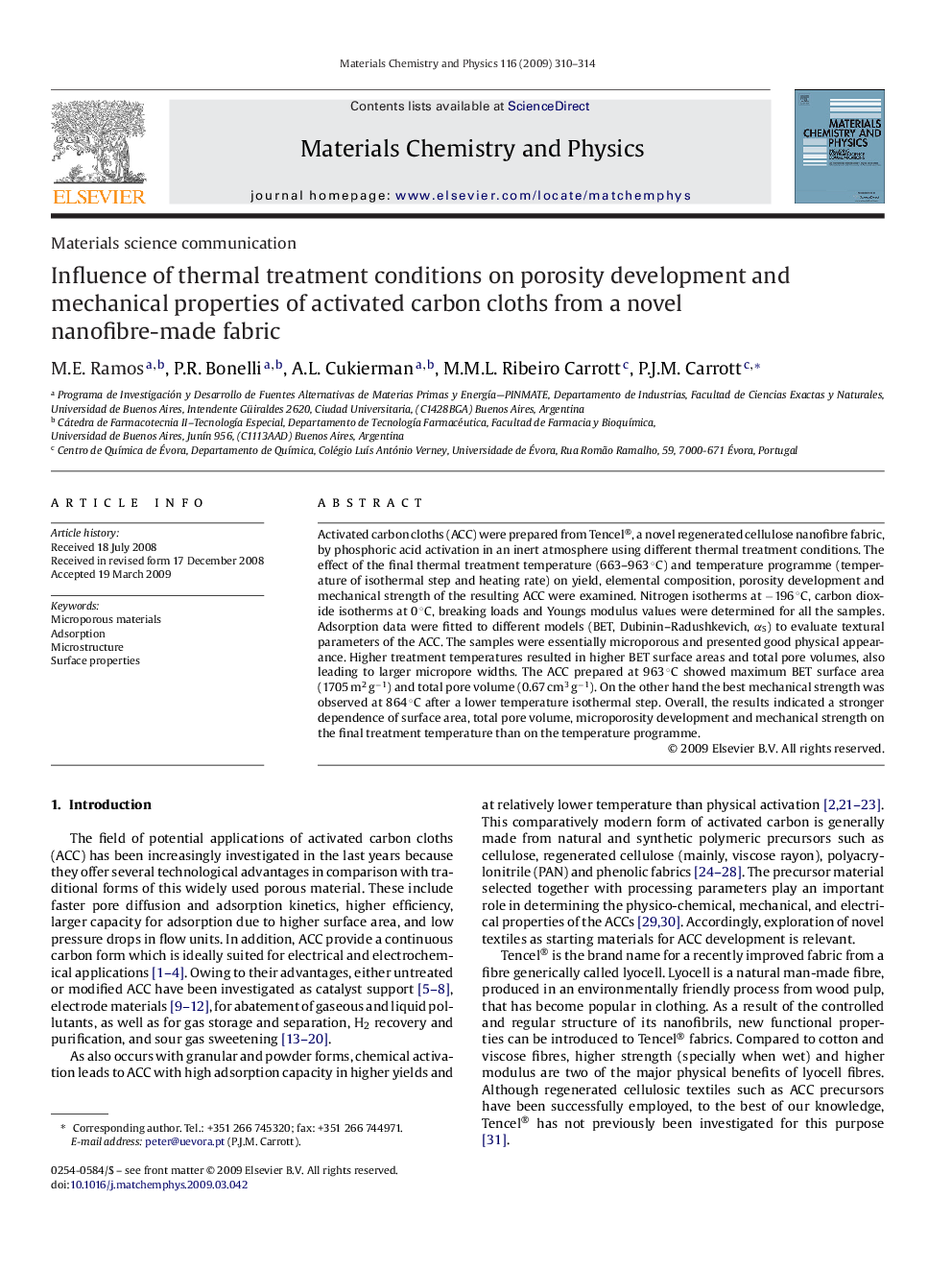| Article ID | Journal | Published Year | Pages | File Type |
|---|---|---|---|---|
| 1526548 | Materials Chemistry and Physics | 2009 | 5 Pages |
Abstract
Activated carbon cloths (ACC) were prepared from Tencel®, a novel regenerated cellulose nanofibre fabric, by phosphoric acid activation in an inert atmosphere using different thermal treatment conditions. The effect of the final thermal treatment temperature (663-963 °C) and temperature programme (temperature of isothermal step and heating rate) on yield, elemental composition, porosity development and mechanical strength of the resulting ACC were examined. Nitrogen isotherms at â196 °C, carbon dioxide isotherms at 0 °C, breaking loads and Youngs modulus values were determined for all the samples. Adsorption data were fitted to different models (BET, Dubinin-Radushkevich, αS) to evaluate textural parameters of the ACC. The samples were essentially microporous and presented good physical appearance. Higher treatment temperatures resulted in higher BET surface areas and total pore volumes, also leading to larger micropore widths. The ACC prepared at 963 °C showed maximum BET surface area (1705 m2 gâ1) and total pore volume (0.67 cm3 gâ1). On the other hand the best mechanical strength was observed at 864 °C after a lower temperature isothermal step. Overall, the results indicated a stronger dependence of surface area, total pore volume, microporosity development and mechanical strength on the final treatment temperature than on the temperature programme.
Related Topics
Physical Sciences and Engineering
Materials Science
Electronic, Optical and Magnetic Materials
Authors
M.E. Ramos, P.R. Bonelli, A.L. Cukierman, M.M.L. Ribeiro Carrott, P.J.M. Carrott,
